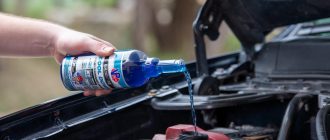How the Car Engine Works
The car engine is a complex piece of machinery, but it can be boiled down to a relatively simple four-stroke cycle:
- Intake stroke: The piston moves down the cylinder, drawing air and fuel into the cylinder through the intake valve.
- Compression stroke: The piston moves up the cylinder, compressing the air and fuel mixture.
- Power stroke: The spark plug ignites the air and fuel mixture, causing it to burn and expand rapidly. This expansion forces the piston down the cylinder, generating power.
- Exhaust stroke: The piston moves up the cylinder, pushing the exhaust gases out through the exhaust valve.
This four-stroke cycle is repeated over and over again to keep the engine running. The speed at which the engine runs is controlled by the throttle, which regulates the amount of air and fuel that is drawn into the cylinder.
The Major Components of a Car Engine
The major components of a car engine include:
- Cylinder block: The cylinder block is the main structural component of the engine. It contains the cylinders, which are the chambers in which the pistons move up and down.
- Cylinder head: The cylinder head is located at the top of the cylinder block and contains the valves, which control the flow of air and fuel into and out of the cylinders.
- Pistons: The pistons are cylindrical-shaped components that move up and down the cylinders. They compress the air and fuel mixture and generate power when the mixture burns.
- Crankshaft: The crankshaft is a rotating shaft that is connected to the pistons. As the pistons move up and down, they turn the crankshaft, which in turn drives the wheels.
- Camshaft: The camshaft is a shaft that is located in the cylinder head and controls the opening and closing of the valves.
- Spark plugs: The spark plugs provide the spark that ignites the air and fuel mixture in the cylinders.
- Fuel injector: The fuel injector sprays fuel into the cylinders.
How the Car Engine is Lubricated
The car engine is lubricated by a system of oil passages and pumps. The oil pump draws oil from the oil pan and circulates it through the engine. The oil lubricates the moving parts of the engine, such as the pistons, crankshaft, and camshaft.
How the Car Engine is Cooled
The car engine is cooled by a system of coolant passages and a radiator. The water pump circulates coolant through the engine. The coolant absorbs heat from the engine and carries it to the radiator. The radiator then dissipates the heat into the atmosphere.
Conclusion
The car engine is a complex piece of machinery, but it is essential for the operation of the vehicle. By understanding how the engine works, you can better understand how to maintain it and keep it running smoothly.





